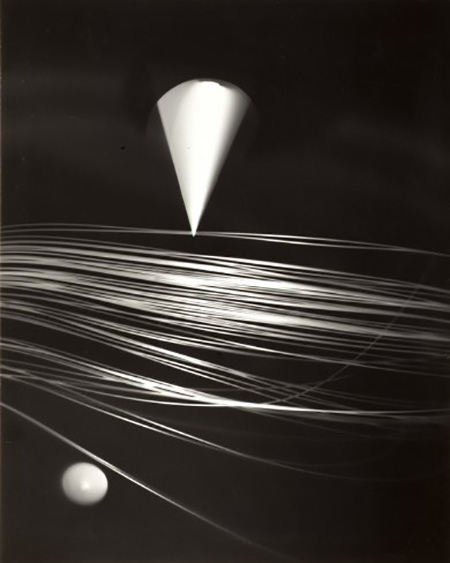
Continuing through March 23, 2014
“See the Light — Photography, Perception, Cognition” is presented in an historically illuminating manner, identifying parallels between photography and vision science. Four distinct chronological periods are addressed, beginning with photography’s invention in 1839 and continuing through the 20th century. The first period, “Descriptive naturalism,” 1839 through 1880, posits that the camera can create an accurate picture of nature. “Subjective naturalism,” through the 1920’s, is mostly characterized by ambiguous forms and abstraction. “Experimental Modernism,” through the mid-20th century, includes abstract and avant garde images that echo the aesthetic perspective and subject matter of paintings and collages of that era. “Romantic Modernism” is described in a wall panel as believing “in the artist’s unique vision, while also advocating technical precision to realize it.” Photographs are by more than 150 artists, including many familiar masters such as Julia Margaret Cameron, Imogen Cunningham, William Henry Fox Talbot, Edward Steichen and Edward Weston. This largely chronological exhibition has many digressions, with some images from the mid-19th century displayed alongside images from a century later. Further, after perusing all 220 photographs, their quality and historical importance, rather than scientific evolution, remain in the viewer’s consciousness. Despite the many iconic photographers represented, few if any of the images are familiar, except in style.
The first section of this show includes Enrico Van Lint’s “Baptistry Pisa” (1860), a detailed image of an ancient domed cathedral, displayed alongside Evelyn Hofer’s gelatin silver print, “The Duomo, Florence” (1958). These two photographs are surprisingly similar for their clarity, details and perspectives. Graham Vivian’s “The Pennants and the Cavendishes “ (1864) depicts five women taking their ease in the long dresses and capes of the period. Another striking early image is the still life “Fruit Piece” (1844-46) by William Henry Fox Talbot. The second section features several portraits, characterized as much by inner vision as by external observation. These include “Prologue to a Sad Spring” (1919) by Weston and “Portrait of Eva Herrmann" (1920) by Alfred Stieglitz. The "Experimental Modernism” section is highlighted by Man Ray’s “229 Boulevard de Raspail” (1930) and Margaret Bourke White ‘s “Fort Peck Dam, Montana” (1936). The final section of this extraordinary exhibition features memorable examples by Walker Evans, Ansel Adams and Paul Strand. Strand's “Ranchos de Taos Church, New Mexico” (1931) is a semi-abstract depiction of classic adobe structures. To fully absorb and enjoy this show requires time, patience and stamina; the important lessons about the history and legacy of photography are the payoff.
